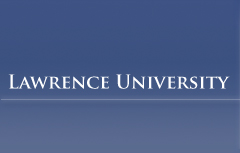Document Type
Honors Project
Publication Date
6-1-2016
Abstract
Biomphalaria glabrata is an intermediate snail host for the digenean trematode, Schistosoma mansoni, which causes the human disease schistosomiasis. A lot of research has focused on the snail-schistosome interaction, especially in regards to the immune response of the snail. The nuclear factor-kappaB (NF-κB) pathway, which is involved in regulating the immune response, can be triggered by the Toll-like receptor (TLR) signaling pathway. However, not much is known about the specific molecular mechanisms regulating these responses. Both NF-κB and TLR homologues have recently been reported in B. glabrata so it is of great interest to determine if BgNF-κB can regulate components of the pathway. We have used bioinformatics to identify putative κB sites upstream of 16 genes coding for members of the TLR pathway in B. glabrata. In order to determine if the snail’s NF-κB p65 protein can recognize the κB sites of interest, electrophoretic mobility shift assays (EMSAs) were carried out. The functional analyses of putative κB sites are essential for advancing our understanding of the TLR mediated NF-κB pathway in B. glabrata. In the present study, six novel κB sites were characterized by showing that the Rel homology domain (RHD) of the B. glabrata NF-κB p65 protein could bind to these κB sites. Our findings suggest that BgNF-κB can regulate the expression of these genes.
Level of Honors
magna cum laude
Department
Biology
Advisor
Judith Humphries
Recommended Citation
Deneckere, Laura E., "Characterization of nuclear factor-kappaB binding sites in the freshwater snail, Biomphalaria glabrata" (2016). Lawrence University Honors Projects. 86.
https://lux.lawrence.edu/luhp/86
